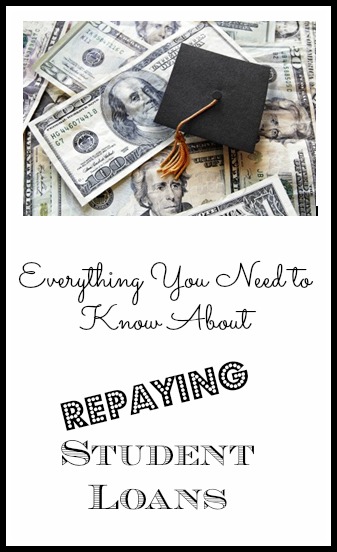We’re going to start a new series on a type of debt that is all too often forgotten, but can be one of the largest amounts in many families, STUDENT LOANS. I know that just the thought of it can be intimidating, but if you know the facts it can really be easier to navigate.
Repaying Student Loans: Where to Start
First, let’s cover the basics, figuring out what kind of loan you have and who services it. I can’t stress the importance of this enough. Most people have FEDERAL loans. There are four types of these, Unsubsidized Stafford Loans and Subsidized Stafford Loans, Federal Perkins Loans, and Federal Plus Loans.
UNSUBSIDIZED STAFFORD LOANS:
These are Federal loans that accrue interest even while you are attending school at least half time or on any type of deferment (we’ll cover these terms later). Re-payment begins approximately 6 months after the student drop below half-time enrollment.
SUBSIDIZED STAFFORD LOANS:
These are Federal loans that DO NOT accrue interest while you are attending school at least half-time or on any type of deferment. Re-payment begins approximately 6 months after the student drop below half-time enrollment.
FEDERAL PERKINS LOANS:
These are awarded to students who have greater financial need. Typically, the interest rates are lower than other loans, but so is the overall amount because there is only so much funding for this type of loan. Re-payment begins approximately 6 months after the student drop below half-time enrollment.
FEDERAL PLUS LOANS:
These are also often referred to as PARENT Plus Loans. These are based on the parents credit history and the overall expense of attendance. This loan will be in the PARENT’S NAME and not the student’s. These loans usually come into repayment between 60-90 days after disbursement.
Stafford loans are FIXED RATE loans, but the rate can vary from year to year.
A few years ago there were countless student loan lenders, but when the economy took a hit, so did they. Now there are really only about a handful left and many people have gotten confused about who is servicing their loans because of all the transfers that took place. The best place to start figuring this out is the National Student Loan Data System found HERE. Then click on Financial Aid Review. I will tell you ahead of time this website WILL ask for your Social Security Number. It is a FEDERAL website and that is how they keep track of student loans. You will also need your PIN that you used for your Free Application for Federal Student Aid. If you don’t have it you can recover it just like any other password. Just click on forgot PIN and enter your information. From here you’ll be able to see your loan information including the type of loan, amount, origination date, disbursed amount, outstanding principal, and outstanding interest. By clicking on each loan you will find the Servicer, Lender, and Guarantor information. Just because you attended the same school for each loan you took out DOES NOT mean that you will have the same servicer for all of them.
There are also Private Loans which are more like your every day loans that have been taken out from a bank. These should really be a LAST RESORT. They do not offer the same repayment options as Federal Loans and every bank is different. If this is the type of loan you have, you’re going to have to talk to the individual financial institution to see what you can do.
I know that this is A LOT to take in, but these are the basic FEDERAL loans. We will be discussing repayment options and more as we continue this series.
-Jen
Check out the other Student Loan articles in this series!
Repaying Student Loans: Intro (Where to Start)
Repaying Student Loans: Section 1 (When do I have to pay and how much?)
Repaying Student Loans: Section 2 (Your Repayment Options)
Repaying Student Loans: Section 3 (What if I can’t make my payment?)
Repaying Student Loans: Section 4 (What if I don’t qualify for deferment?)
Repaying Student Loans: Section 5 (Can my loan be discharged?)
Repaying Student Loans: Section 6 (Loan Forgiveness Programs)
Repaying Student Loans: Section 7 (Loan Consolidations)
Repaying Student Loans: Section 8 (Questions and Answers)
Make sure to check out our other Personal Finance articles!
10 Tips for Building An Emergency Fund
How Couponing Saves Me $7,000 Per Year
Create A Gift Closet & Save Money
Starting a Stockpile Can Save You Money
Three Tips to Rebuilding Your Credit
How to Have the Best Yard Sale Ever
Keeping a Price Book Can Save You Money
Avoid Bank & ATM Fees & Save Money


Great topic Jen! Did my email inspire you? lol. The more educated people are the better. Perhaps I can do a guest blog for you? I’ve got lots of great things coming up on my blog http://www.payingsalliemae.com as well. I’ve become a student loan guru so to speak! Thanks for helping get the word out!